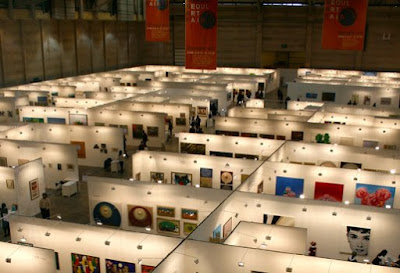

 Julian Opie's work has sold for as much as US$70,000 at Christies recently. You might wanna opt for a couple postcards or a baby bib: http://www.julianopieshop.com/
Julian Opie's work has sold for as much as US$70,000 at Christies recently. You might wanna opt for a couple postcards or a baby bib: http://www.julianopieshop.com/Contemporary Korean Art News


 Julian Opie's work has sold for as much as US$70,000 at Christies recently. You might wanna opt for a couple postcards or a baby bib: http://www.julianopieshop.com/
Julian Opie's work has sold for as much as US$70,000 at Christies recently. You might wanna opt for a couple postcards or a baby bib: http://www.julianopieshop.com/
























The “Modern Korea Rediscovered” exhibition at the National Museum of Contemporary Art is as good a survey of modern Korean art as you’re going to find. http://deoksugung.moca.go.kr/deok.jsp (no English website I could find) Just go to Deoksu Palace (City Hall subway stop); admission is 1,000 won. At the time I’m writing this, however, there are only two days left to check it out.
The exhibition contains work by Yi Kwae-dae (who mixes a proud sense of Korean identity with Renaissance and Baroque influences), Yi Yu-tae, (whose work is among the first to depict the “New Woman” with responsibilities that move beyond wise mother and good wife), and Park Soo-keun (an elementary school dropout whose geometric representations of everyday working people has made his work a national treasure). Park Soo-keun’s “Women Washing Laundry” fetched a record 4.52 billion won (US$3.25 million) at auction last May.
The exhibition also charts Korea’s forays into Cubism, geometric and Expressionist abstract art, and the Art Informel movement.
